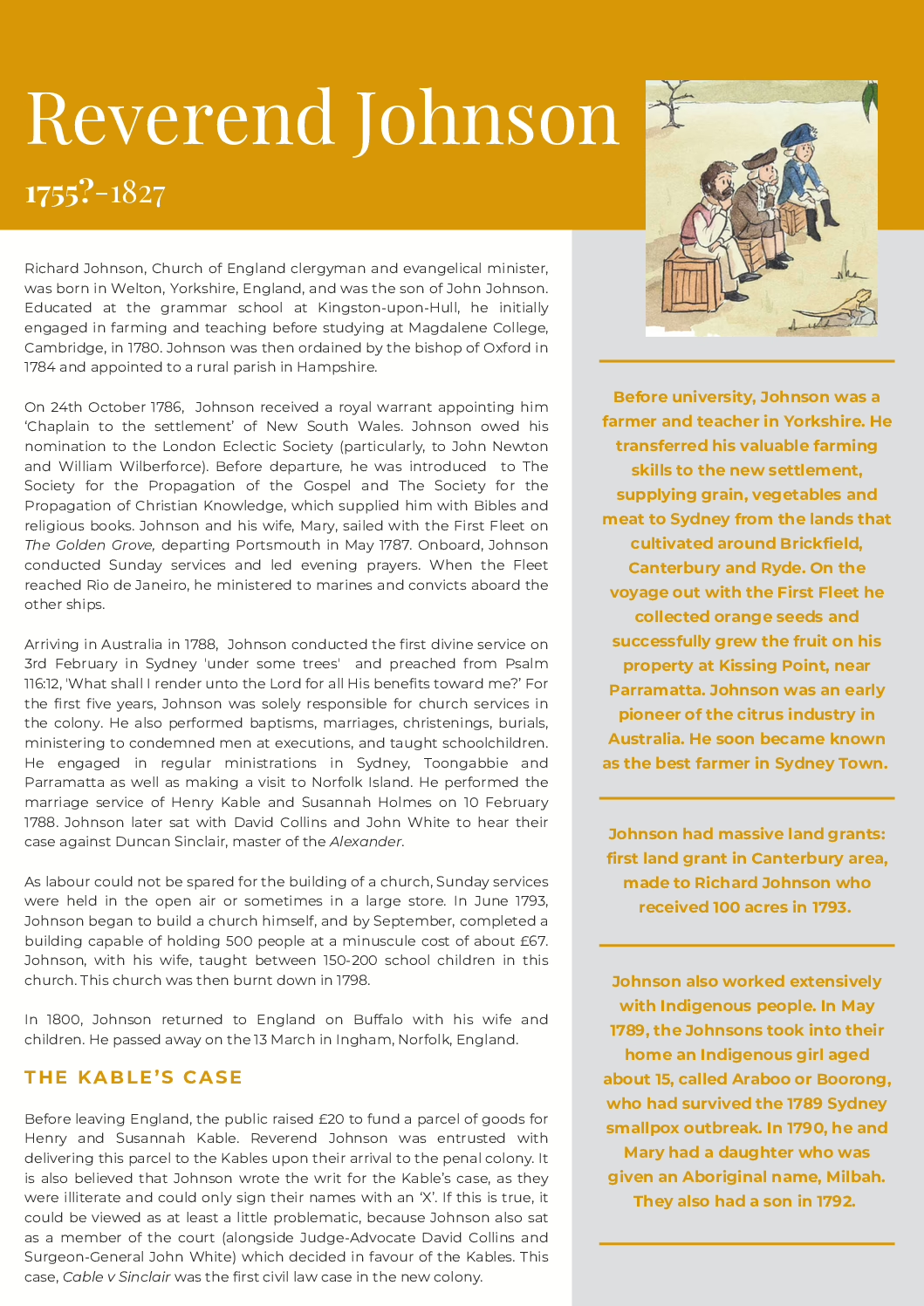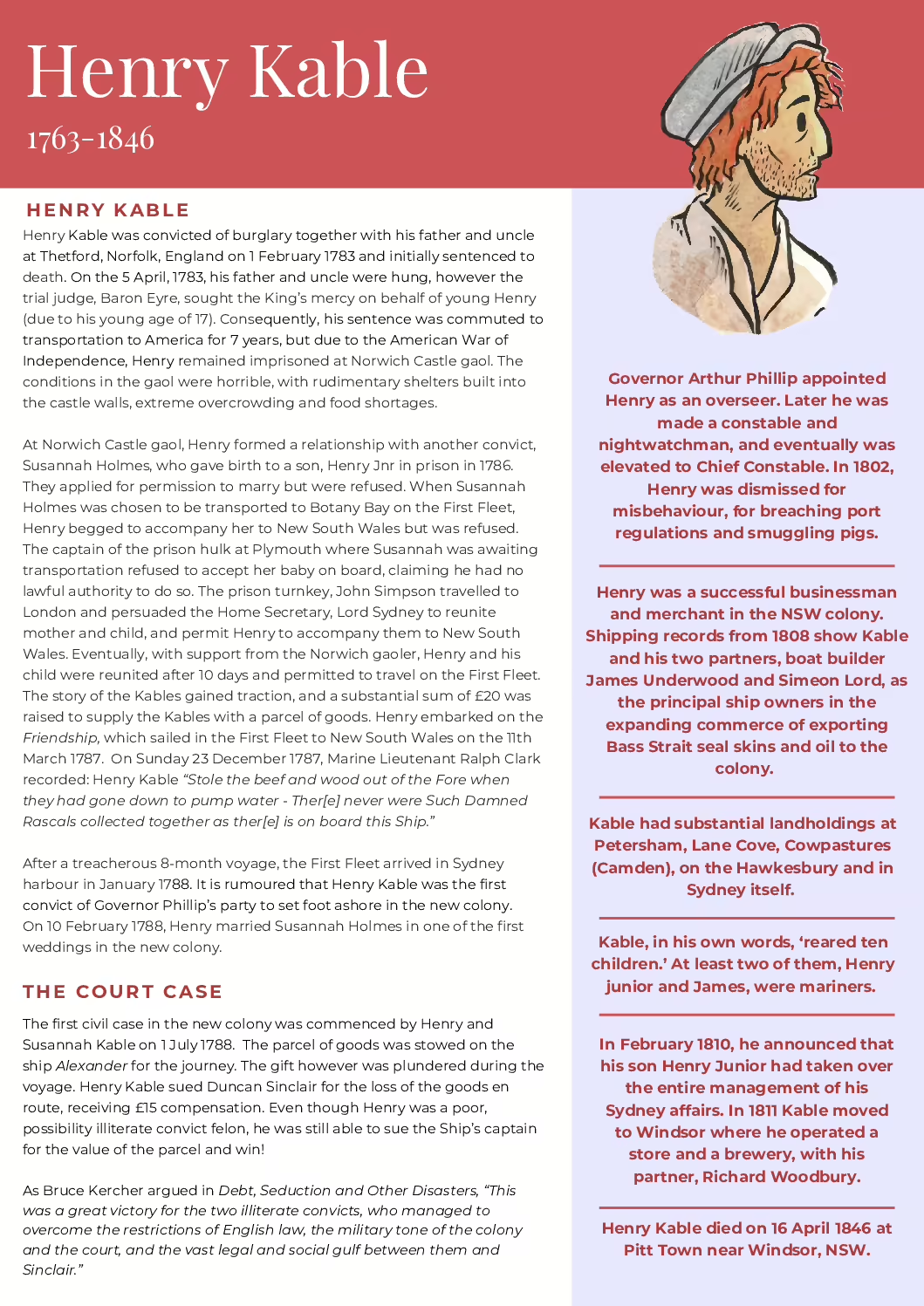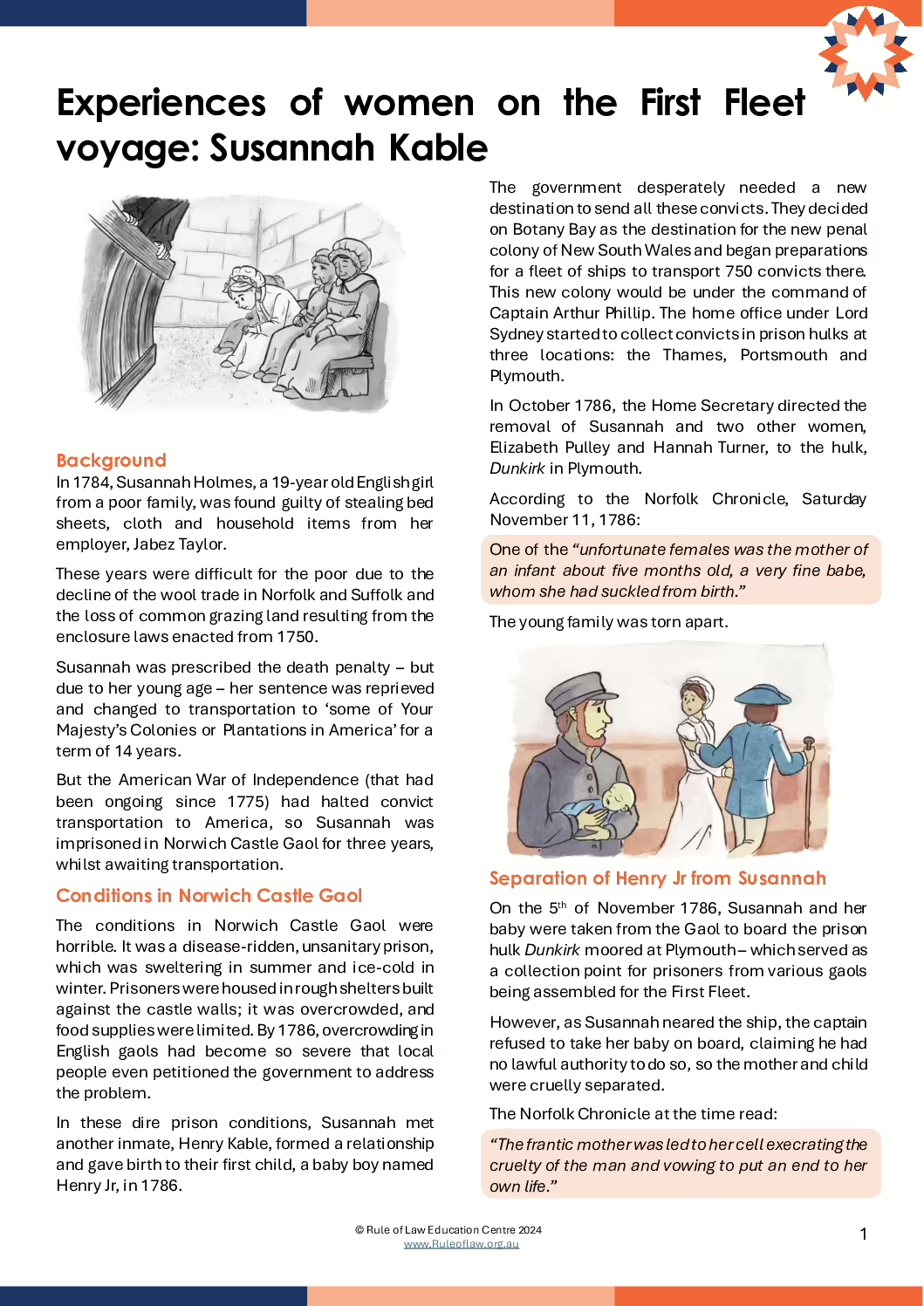Duncan Sinclair and the Alexander
The Alexander and the first fleet voyage
Duncan Sinclair was the Ship Master of the Alexander, which arrived in Sydney Cove on the 26th of January, 1788
The Alexander was the largest convict transport in the First Fleet, carrying all-male convicts. It had the highest mortality rate of the First Fleet ships: with 16 passengers dying before and 15 during the voyage. Whilst moored at Plymouth, the overcrowded Alexander had to be evacuated because of an outbreak of typhus. During the 8-month voyage to Botany Bay, the 452-ton barque carried approx. 25-33 crew and 195 convicts.
During the First Fleet voyage, Sinclair encountered several challenges. On 12 May 1787, 10 sailors aboard the Alexander mutinied over unpaid wages. On 18 July 1787, amid widespread illness, Sinclair was ordered to pump out the bilge water. Surgeon White, claimed illness was “wholly occasioned by the bilge water, which had….risen to so great a height that the panels of the cabin, and the buttons on the clothes of the officers, were turned nearly black by the noxious effluvia [toxic fumes]. When the hatches were taken off, the stench was so powerful that it was scarcely possible to stand over them.”
On the 6th of October, Sinclair was faced with a more serious mutiny involving the convict, John Powers and four crew members. Armed with knives, pistons and crowbars, they planned to escape at their next port of call. However, one of them betrayed the plan and they were sent to Sirius. Powers was put in irons and the four crew set to work under close watch. Surgeon Bowes claimed this was caused by Sinclair “not exerting a proper spirit over them.”
The fleet spent a month at Cape Town before setting sail again on the 12th of November. In December, the fleet faced severe storms, sustained damage and many aboard the Alexander fell ill. The Alexander finally arrived in Sydney Cove on the 26th of January, 1788.
The Court case
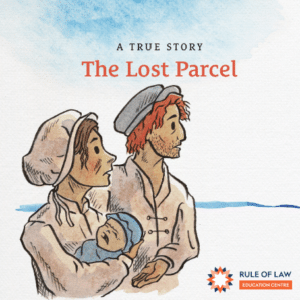
Return Voyage
Sinclair left the colony on 14 July, 1788 on the Alexander. During the return voyage, the ship lost 17 crew members to scurvy near Borneo. After taking on board the survivors of the wrecked Friendship, who were also stricken with scurvy, the ship struggled to reach Batavia (Jakarta) as the crew were so sick only one man “was able to go aloft.” The ship finally arrived in England on 3 June 1789.
Other Characters in the Lost Parcel Story
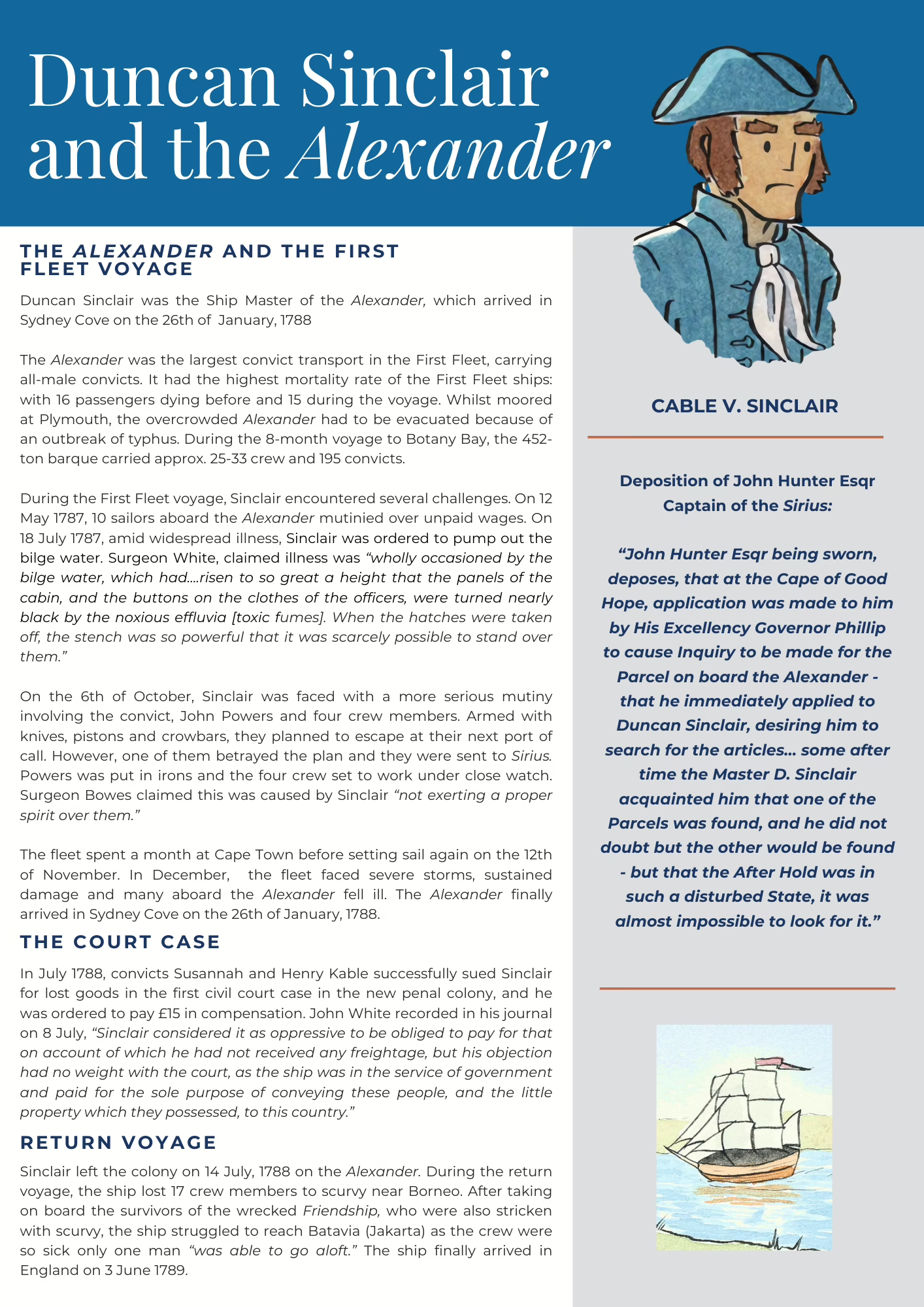
Deposition of John Hunter Esqr Captain of the Sirius:
“John Hunter Esqr being sworn, deposes, that at the Cape of Good Hope, application was made to him by His Excellency Governor Phillip to cause Inquiry to be made for the Parcel on board the Alexander – that he immediately applied to Duncan Sinclair, desiring him to search for the articles… some after time the Master D. Sinclair acquainted him that one of the Parcels was found, and he did not doubt but the other would be found – but that the After Hold was in such a disturbed State, it was almost impossible to look for it.”
Click here to go to the Court Documents for the First Civil Case

![NRS-2656-[2-8147] Court of Civil Jurisdiction 1788-1809 Rough mintutes of proceedings Cable v Sinclair p3](https://www.ruleoflaw.org.au/wp-content/uploads/NRS-2656-2-8147-Court-of-Civil-Jurisdiction-1788-1809-Rough-mintutes-of-proceedings-Cable-v-Sinclair-p3.png)
